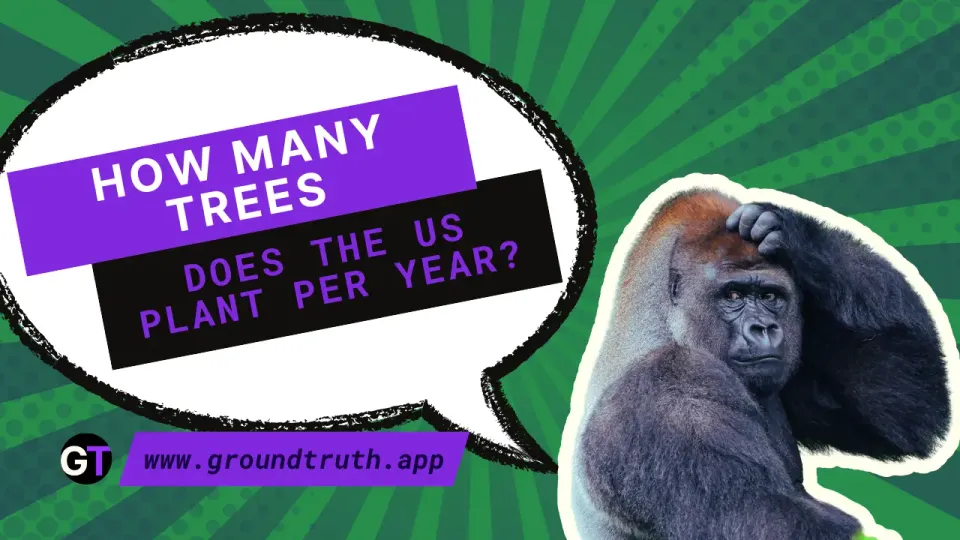Do We Have Enough Land to Save the Planet? 🌎💚
Scholars from MIT and Shell have thoughts.

Balancing Land Use for a Low-Carbon Future: Insights from MIT’s 1.5°C Climate Study
The big question: Can we make room for food, energy, and nature-based climate solutions—and not run out of space?
With the global push to keep warming at 1.5°C, land is becoming the ultimate juggling act. Can we really balance our food needs, energy production, and carbon storage, or is there just too much competing demand? A new study goes deep into this question, mapping out exactly what it will take to make space for everything—and the good news is, it’s possible. But it’ll require bold policy decisions, clever planning, and a lot of strategic land use. Here’s what Gurgel et. al. (2024) uncovered. The study contains contributions from authors affiliated with MIT’s Center for Sustainability Science and Strategy and from Shell International (yes, that Shell).
The Three Big Land Demands: Food, Forests, and Renewables 🌾🌲⚡
THe study's “Sky 2050” scenario lays out the competing demands on land if we want to hit 1.5°C and create a sustainable future. Here’s how it shakes out:
- Forests and Nature-Based Carbon Sinks 🌳
Gurgel et. al. (2024) estimate that between 2.5 to 3.5 billion hectares of land would need to be reserved for forests and other natural carbon sinks by 2050. Forests are our biggest CO₂ sponges, soaking up emissions while boosting biodiversity. But with that kind of land requirement, we’re going to need to prioritize strategic reforestation to make it work. - Bioenergy Production 🌱
Bioenergy needs a massive chunk of land too. The study's models estimate up to 500 million hectares dedicated to bioenergy by the end of the century. Bioenergy can coexist with other land uses, but it needs careful management to avoid taking over food-producing areas. - Renewable Power Infrastructure ☀️🌬️
Solar and wind farms require 0.6 billion hectares globally to produce 300–600 exajoules per year of clean energy. This renewable infrastructure is a must-have for a low-carbon future, but its footprint needs to be managed carefully to avoid conflict with food and forest land.
These numbers underscore the importance of thoughtful, data-driven policies to ensure that land resources are shared strategically among all these priorities.
Open Data Toolkit: Numbers to Guide Land-Use Planning 📊
The study isn’t just theory—it’s packed with open data to help policymakers plan for sustainable land use. Here’s what’s included:
- Land Use Allocation 🌍
The study maps out global land use, covering cropland, pastures, forests, and blue carbon ecosystems (think coastal wetlands). This detailed data helps planners see where changes are needed to meet climate stabilization goals. - Nature-Based Solutions (NBS) and Carbon Sequestration Potential 🌲
If you’re looking for carbon sequestration numbers, this data covers reforestation, agroforestry, wetland restoration, and other NBS approaches. The data includes metrics on carbon storage potential across different ecosystems, helping decision-makers understand which nature-based solutions pack the biggest climate punch. - Cost of Carbon Sequestration and Reforestation 💸
To put numbers on the cost of reforestation methods, the study includes price tags for different approaches:- Natural Regeneration: With a median cost of $140 per hectare, natural regeneration is one of the more budget-friendly options for CO₂ removal. This low-cost solution is particularly effective in areas where nature can largely restore itself with minimal human intervention.
- Plantation Reforestation: Much pricier at $3,729 per hectare, plantation reforestation involves replanting and maintenance costs. The upside? Plantation forests can yield timber revenue, which helps offset some of the upfront costs.
Abatement Costs Per Ton: For a more direct comparison, the authors calculated the cost per ton of CO₂ removed: natural regeneration averages $23.80 per ton, while plantation reforestation is about $23.00 per ton (if timber revenue is included). Costs can vary wildly based on location, ranging from -$14.80 to $724 per ton, so this data is crucial for making site-specific choices.
Roadmap for Land-Use Balance: Food, Energy, and Climate 🌎🍃⚡
So, how do we make it work? The study outlines a series of practical steps that could balance land needs for food, energy, and climate. Here’s what they recommend:
- Prioritize High-Impact Nature-Based Solutions 🌲
Focus on agroforestry, sustainable grazing, and reforestation practices that maximize carbon sequestration while supporting biodiversity and local economies. These strategies work especially well for balancing environmental and community needs. - Scale Bioenergy Sustainably 🌾
Bioenergy could be a major contributor to clean energy, but only if it’s done right. The study suggests targeting 50–65 exajoules per year by 2050 to meet energy needs without compromising essential food production or biodiversity zones. - Use Regional Policies to Optimize Land Use 🗺️
Regions can customize land-use policies that consider local land patterns and resilience needs. Tailoring policies at the regional level helps planners prioritize land use in ways that meet both local and global goals.
Final Thoughts: A 1.5°C Future is Maybe Still Possible—But It’ll Take Precision 🤞
The study by Gurgel et. al. shows us the path to a sustainable future is there, but it’s narrow. With the right combination of policies, financial investments, and local cooperation, we can balance the world’s demands on land while staying on track for 1.5°C. It’s a complex puzzle, but the data-driven approach gives us a roadmap that could make it all fit—just in time to save the planet. Their land-use roadmap highlights the need for precise policies, a priority for governments, NGOs, and companies committed to esg credits and sustainable environmental contributions.
Emissions reductions from cutting back on the use of oil and gas were, of course, outside of the scope of this study.🤓
Source 📚
Gurgel A, Morris J, Haigh M, Robertson AD, van der Ploeg R and Paltsev S (2024) Land-use competition in 1.5°C climate stabilization: is there enough land for all potential needs? Front. Environ. Sci. 12:1393327. doi: 10.3389/fenvs.2024.1393327. Retrieved from https://www.frontiersin.org/journals/environmental-science/articles/10.3389/fenvs.2024.1393327/full#h7
Edited by Chris Harris

This work is licensed under a
Creative Commons Attribution 4.0 International License.




